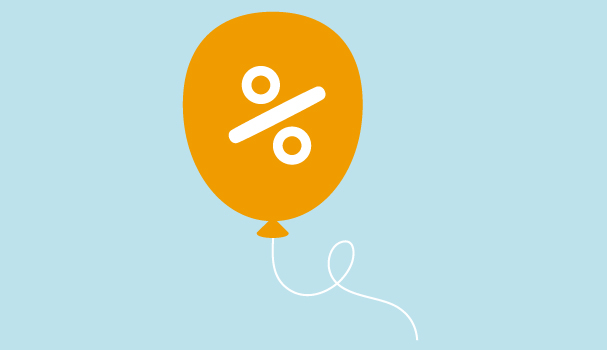If you ask your bank for a loan and you pass their lending tests you will be offered a number of finance options, including a fixed or variable interest rate loan. Feedback from banks suggests more businesses are opting for fixed rate loans. Why? The reason is that more than five years on from the last bank (or base) rate cut to 0.5%, it looks as though we are approaching the first increase, with the rate predicted to rise gradually to 2.5% in the next three years. Yet, according to an ICAEW survey, many businesses are ill-prepared for a future interest rate rise, with nearly two thirds (65%) of businesses having not put any measures in place to deal with rising interest rates.
So is securing a fixed rate deal in the current environment the best option? This depends on a number of factors. Fixed rate deals are for a specific period – usually three, five or ten years but can be for longer. If you terminate a fixed rate deal early there may be penalties which can be very costly. So you have to think carefully about the period – or term – if you want a fixed rate loan. Another consideration regarding a variable rate loan is whether it is linked to the base rate or LIBOR (the rate that a bank will pay if it borrows from another bank).
Measures to consider if you already have a loan or overdraft
You should consider how future rate increases may affect your cashflow projections, existing debt repayments and business development plans. If you’re considering an acquisition, the changing finance environment may make moving earlier more advisable. If you have an overdraft (usually at a variable rate) you may want to reduce it or convert to a fixed rate loan. However many businesses did not adjust loan payments when interest rates were higher so they could be better able to meet future loan repayment commitments.
You may want to model the impact of interest rate increases of 0.25% and higher on projected profits and cashflow. There may also be an opportunity to strike a deal with your bank ahead of an interest rate rise with lenders. Other lenders might be prepared to provide a better deal to win business, so these alternatives should be explored. This may include moving from a standard or variable commercial mortgage to a fixed rate.
Consider the impact on customers and suppliers
It’s not just your business that will be affected by higher interest rates, it will be your suppliers and, potentially, your customers too. Higher interest rates increase the cost of debt while also making saving more attractive. Both could have a knock-on effect on consumer spending. Similarly, rising rates could be a potential problem for your suppliers. Small companies with little or no access to market funding could be at the biggest risk of an interest rate shock, the ICAEW’s April research warned, especially if rates rise faster than expected.
Exchange rates could be affected
Interest rates and exchange rates are interlinked. Foreign investors may be attracted to a higher UK interest rate, which may cause the exchange rate to rise. Relatively small interest rate increases can have a big impact on importers and exporters.
Rethink your return on savings
If you’re a business sitting on cash, it’s going to be important to review your savings as well as any debt or financing.
Early consideration and action are the key
Finally, the effects of rising interest rates can take a while to filter through into the wider economy. So you do have time to assess your situation, consider the options and then to take appropriate action. A useful first move would be to sit down with your banker and accountant and consider the potential impact of rate rises on your business.
Share via:








































